As a company working in the travel industry, you’re probably facing the following problems with your payment processing:
- Your payment failure rates are too high. Some of your processors might not provide the performance you need, and setting up backup processors across multiple markets strains your engineering team.
- Struggling to lower payment costs: You’re spending heavily on processing, but costs keep adding up without the resources to optimize routing or negotiate better rates.
- Customers expect more payment options. Travelers want to use a variety of payment methods. However, integrating them takes too long, making it hard to stay competitive.
Payments keep the travel industry moving, but recent research reveals that nearly two-thirds of travel businesses are losing valuable revenue because of payment inefficiencies.
Whether you’re an online travel agency (OTA), a travel experience platform, or one of many related businesses in an increasingly diverse travel and tourism market, you must optimize your payment systems and practices to protect and grow revenue.
This article will explain the most significant challenges you might encounter in the travel industry and introduce a payment infrastructure platform that can transform your payment strategy.
If you’re ready to lower your costs and simplify your payment structure, contact Primer today
Six challenges of payment processing in the travel industry
1. Your payments are declining too often, and it’s impacting your customer experience
Travel payments are high-risk and face stricter security measures than other transactions, leading to a higher volume of hard and soft declines. In the UK in 2022, about 13.4% of consumer payments in the travel sector failed, costing £5.45 billion in lost revenue.
When an online payment fails, most customers never return to the website to try again. Instead, they abandon their purchase out of frustration or lose trust in your brand entirely.
In a competitive industry like travel, cart abandonment, and declining brand perception can amount to thousands or millions in lost revenue. This is especially true during peak travel periods when a processor failure can seriously dent your bottom line.
For instance, imagine you’re a travel experience platform running a peak summer season deal. If your authorization rate drops to 60%, 4 in 10 customers could have issues checking out, leading to significant lost revenue.
Read More: Why you need a multi-processor strategy.
2. Adding new processors is taking too long
If you’ve added or are considering adding additional backup processors, you know it’s complex and time-consuming for your engineering teams. Integrations can take months, diverting resources from critical priorities like product development.
And even after integration, the work doesn’t stop. Your team must maintain and update the connection, adding to the operational burden.
3. Your payment costs are too high, and scaling only makes it worse
As your business scales, card processing fees start to eat into your bottom line. As a global business, you’ll want to optimize costs to increase profitability without compromising reliability.
One way to reduce fees on international bookings is to route payments through local acquirers in your customers’ regions. Local acquirers can often offer more affordable pricing and save money on cross-border fees.
However, even the most straightforward routing is complex and demands significant engineering resources. And, as you add more processors, the challenge of managing and optimizing payments intensifies.
4. You need to cater to local payment preferences and regulations
Your customers are global, and they expect to be able to use their preferred ] payment methods. Up to 76% of customers will simply abandon a transaction if you can’t offer the payment method that’s most comfortable for them.
For example, up to 92% of online customers in China use AliPay for at least some of their transitions. In the Netherlands, over 70% of customers prefer the bank-to-bank platform iDEAL, which lets them book without their credit or debit cards.
Travel businesses must ensure they meet customer expectations and offer relevant payment methods. To do this, they need a payment strategy that supports an optimal mix: integrating multiple PSPs, prioritizing payment methods at checkout, adding new options quickly, and ensuring compliance across regions.
Read more: How to optimize your checkout: a complete guide.
5. You’re struggling to meet shifting customer expectations for payment flexibility
Offering an installment or Buy Now, Pay Later method has shifted from a perk to an expectation, particularly in regions like the US and LATAM.
For example, customers booking a resort package or long-haul flight won’t–or can’t–pay in a lump sum. You need to offer them flexibility or risk losing bookings.
6. Your current refund process is impacting customer satisfaction
In travel, fast and hassle-free refunds are essential.
For example, cancellations due to adverse weather are inevitable if you're a ticket operator. While your customer base will likely understand this, they expect a quick and easy refund process from tour operators. If you don’t have an efficient way to process refund payouts, delays and complications can quickly damage trust and lead to lost future bookings.
How payment orchestration makes it easier to scale in the travel industry
Payment orchestration is becoming the go-to solution for leading travel brands—helping them overcome payment challenges and transform payments into a powerful competitive advantage.
Payment orchestration integrates and centralizes all your payment processors in one place, allowing you to better manage your payment strategy.
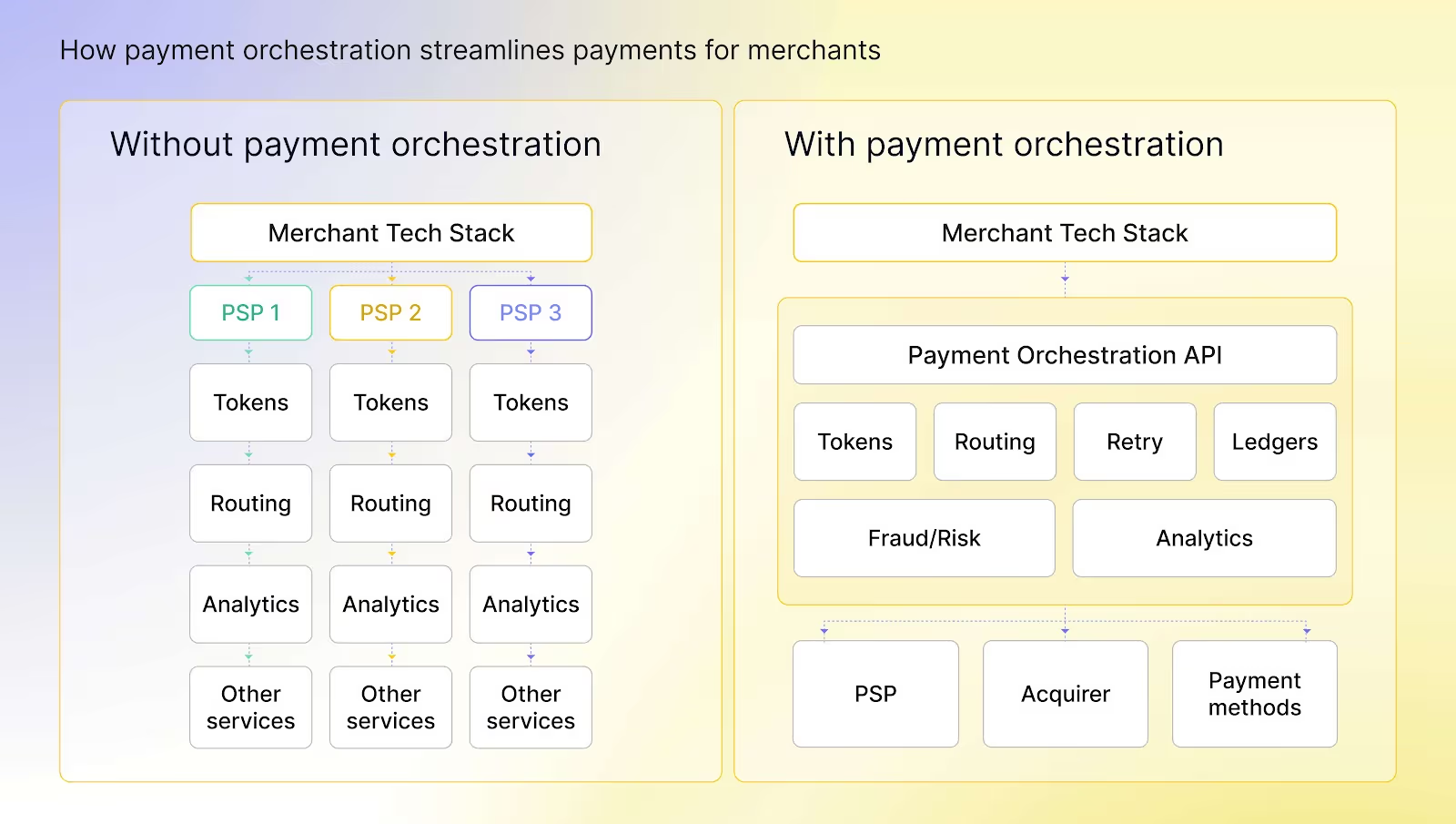
Here’s how it works:
1. When customers reach the checkout page, they select their preferred payment method from a list of relevant options.
2. When customers place their orders, the payments orchestration platform (POP) collects and tokenizes (encrypts) their details and passes the transaction.
3. Then, using logic established by the merchant, the payments orchestration platform routes the payment request to the most relevant payment processor. For instance, a payment in France could be routed to PayPlug, while one in the UK could go through Checkout.com.
4. The PSP (acting as the acquirer) receives the customer’s payment information and communicates with the issuing bank to verify and authorize the transaction. If approved, the PSP sends an authorization response code to both the payment gateway and the merchant.
A payment orchestration platform uses a sophisticated routing system to maximize payment acceptance rates and reduce the risk of declines.
By routing payments to the most optimal payment processor each time and always having a backup processor available, the POP helps:
- Prevent lost sales
- Capture lost revenue
- Create a frictionless customer experience.
- Optimize their costs using payment routing
Read more: What is payment orchestration, and how can it maximize payment efficiency?
How Primer can help travel companies optimize payments
Primer is a unified payments infrastructure that enables its users to accept, manage, and optimize online payments across multiple payment processors and services. By using a single API, Primer removes the constraints and technical complexity from traditional payment structures, empowering you to scale more profitably and faster.
We go beyond just simple payment orchestration. We provide powerful tools for seamless integrations, automation, and fraud prevention, helping businesses streamline their payment stack while delivering a frictionless customer experience.
Adding a new payment processor using Primer takes just four simple, no-code steps:
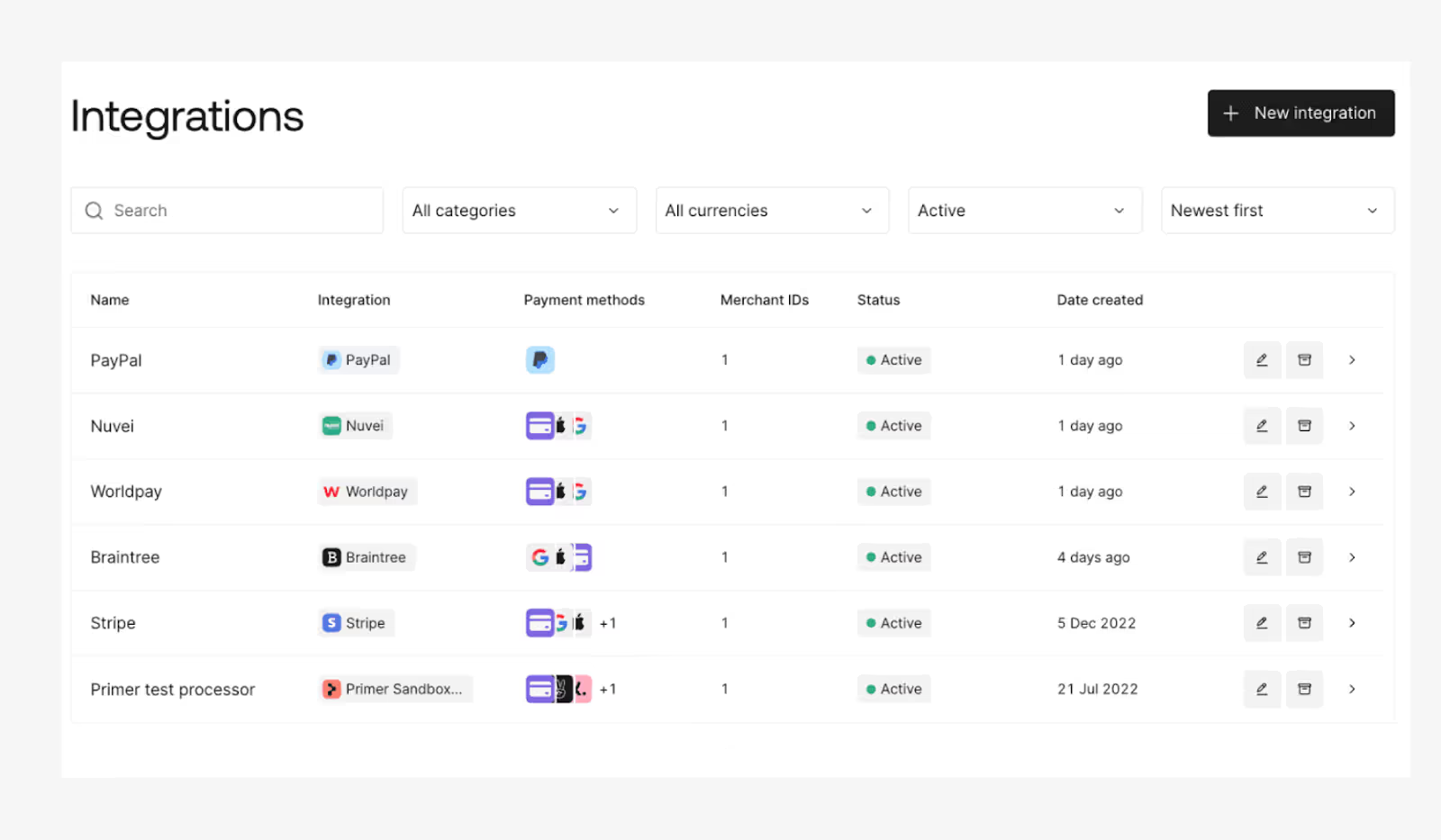
1. Choose your processor in the Primer Dashboard
2. Grant Primer access to your processor account
3. Enable alternative payment methods (i.e., Apple Pay, Google Pay) for that processor
4. Configure Universal Checkout to display these payment methods to the right customers in the right places — no coding is required.
Here are three other benefits of using Primer:
1. Recover over 20% of failed payments with automated fallbacks
In the travel industry, failed payments don’t just mean lost revenue—they lead to customer churn and reputational damage. That’s why having a multi-processor payment strategy is essential.
Beyond transaction failures, your current PSP’s risk appetite could shift anytime, potentially preventing you from processing payments. Even if you’ve integrated multiple processors, routing transactions to a backup often requires complex coding, creating ongoing technical burdens, especially as you expand globally.
This isn’t a problem with Primer.
With just a few clicks, you can set up an automated Fallback. If your current processor fails, the Fallback will automatically route your transaction to your chosen backup.
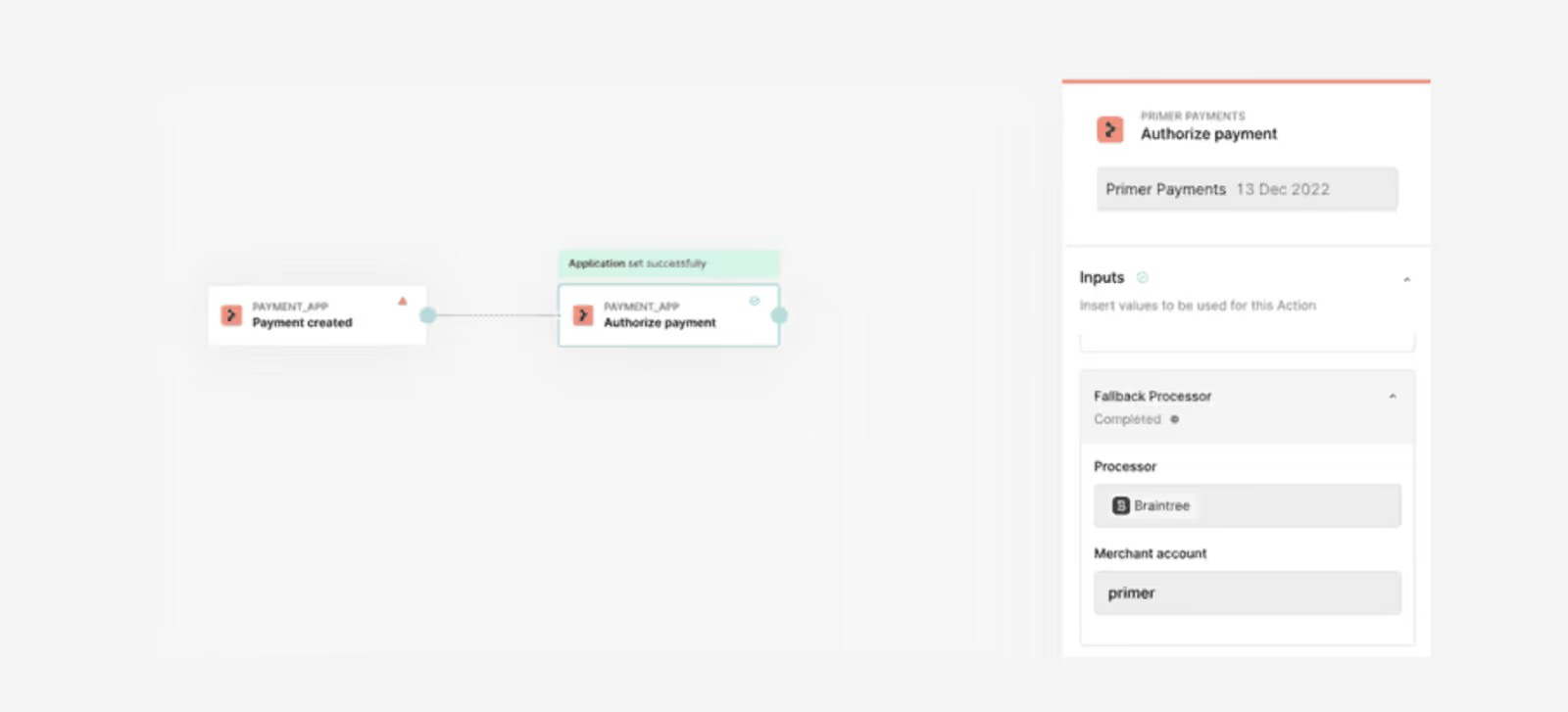
Modifying your Fallback strategy does not require code, so you don’t have to request engineering resources to adapt.
This is how Primer customer Banxa used Fallbacks to recover 17% of all qualifying failed payments.
Read more: Banxa deploys Primer to break down barriers to crypto adoption
2. Optimize payment flows without any coding
Integrating multiple processors is a great way to optimize your revenue stream using smart payment routing.
For example, if you’re an online travel agent processing bookings from multiple countries, routing payments through local acquirers can help reduce cross-border fees and improve approval rates.
However, without a payment solution like Primer, you’d need significant engineering resources and time to build and maintain such complex routing logic. This likely means tying talented team members to tasks unrelated to your core product.
When you use Primer, you simply drag and drop to set up a custom workflow for each type of transaction and define the rules and conditions that will trigger each flow.
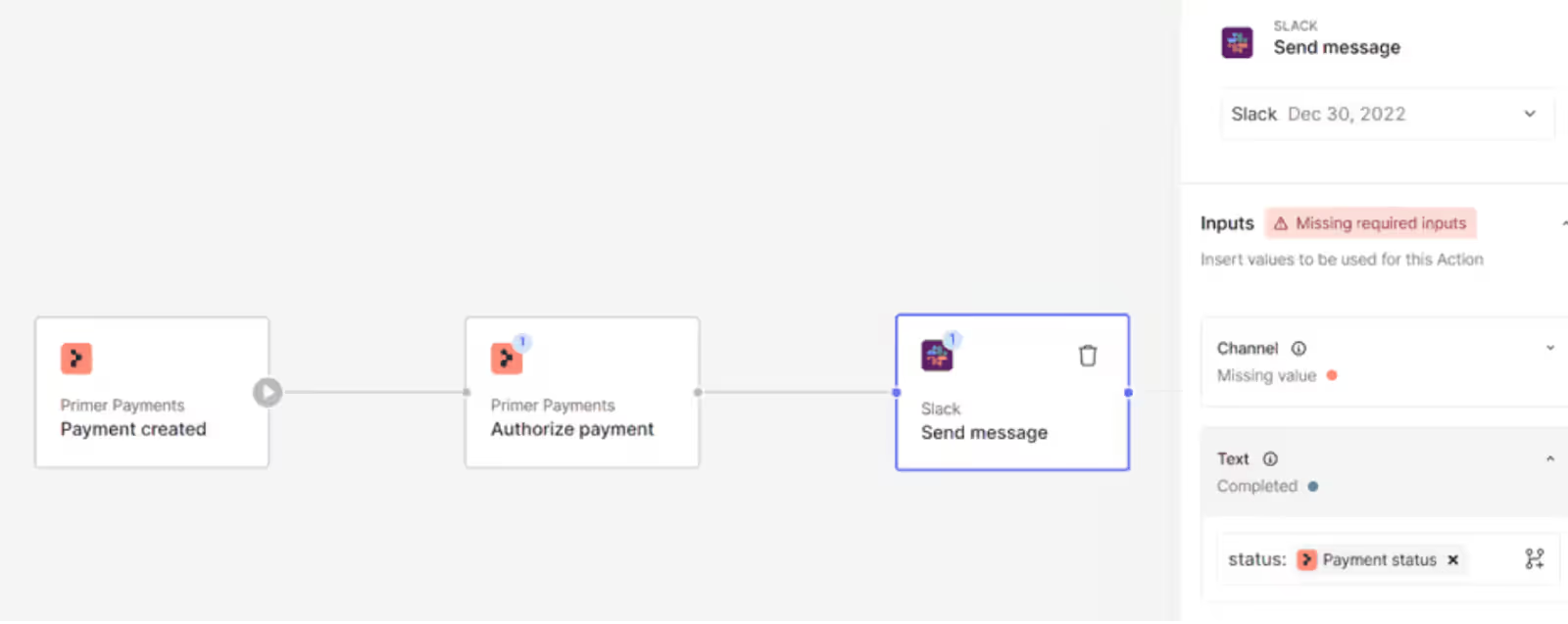
Plus, all your payment data is visible within the Observability dashboard, giving you visibility into all your PSPs in the same place. That means it’s easy to see processor performance at a granular level: for instance, you can compare the reliability of processor A vs processor B in a specific region.
3. Add new payment methods in seconds (instead of months)
Integrating a new payment method can take months. With Primer, it takes seconds, giving you the flexibility to scale faster and meet customer expectations globally.
You only need to integrate Primer’s Unified Payments API once, and then you’ll have access to a wide range of local and global payment methods, so you can:
- Add digital wallets, like Apple Pay and Google Pay
- Offer your customers BNPL payment options like Klarna or ClearPay
- Expand globally while offering hyper-local payment methods like iDEAL or Everpay Greek
Once added to your payment stack, you can control which payment methods your customers see and the order in which they appear with Universal Checkout.
For example, this could mean displaying iDEAL only to customers with Dutch IP addresses or Apple Pay only on Apple devices.
Read more: See how Lime used Primer to meet app-based payment method requirements in Dubai.
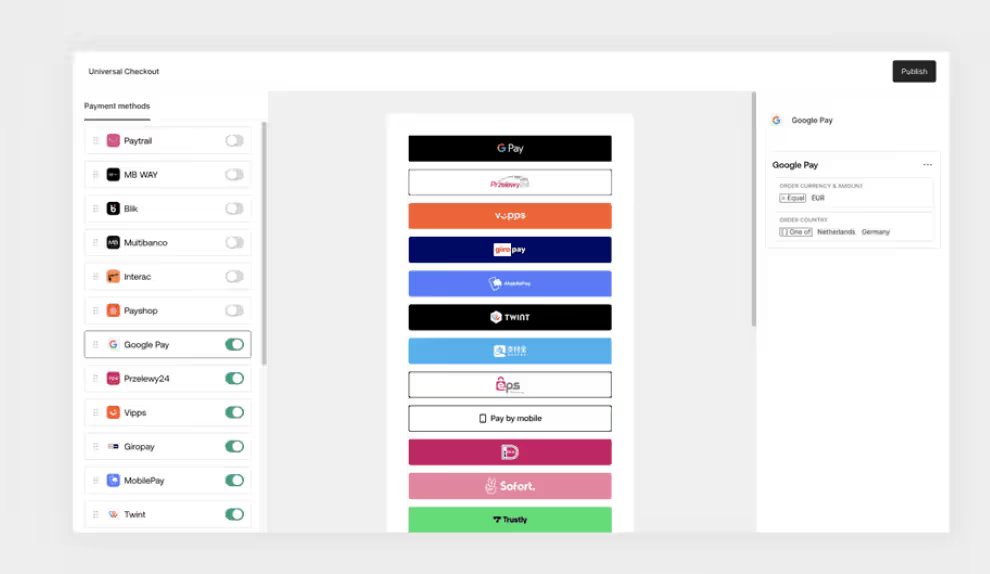
With the Headless Checkout, you can also customize your checkout with your branding and colors, boosting your brand authority and customer trust.
How Ferryhopper went from Greek to Global with Primer’s no-code payments orchestration

Ferryhopper is an online travel agency that allows travelers to compare and book ferry tickets through its app or website. With over 100 operators and 500 destinations—and counting—it’s transforming the future of ferry travel.
As is common in Greece, its legacy payment stack redirected customers to a checkout form on its bank’s website to complete each ticket payment. However, as it began expanding to new regions, it realized this could be a significant conversion-killer in other markets.
It also faced limited visibility into checkout behavior, making it difficult to analyze performance, optimize costs, and identify areas for improvement.
Ferryhopper started by building its own solution, migrating transactions to an embedded payment form. However, as it scaled, it quickly realized it would need a third-party partner to integrate new acquirers and payment methods.
Primer’s Workflows enabled Ferryhopper to set up intelligent payment routing, favoring optimal providers and reducing overhead.
"Crafting these workflows and implementing conditioning logic has proven remarkably straightforward," says Payments Product Lead, Konstantinos Kontos. "Using Primer to streamline our operations, enhance our customer experiences, and optimize performance has turned payments into a strategic growth lever for our business.”
The company now routes 100% of its volume through Primer, managing payments across 12 countries, five PSPs, and multiple no-card payment methods like Apple Pay and Google Pay. Ferryhopper also recently began implementing automated Fallbacks and has already recovered 1% of lost bookings.
Read more: Charting a new course for payments at Ferryhopper.
Scale leaner and faster with Primer for travel payments
Preventing declines and adding new ways to pay can be time-consuming and expensive. To scale in the travel industry, a unified payments infrastructure like Primer can help simplify payment operations, cut costs, and improve cash flow.
Book a call with Primer today to learn more about how payment orchestration can help your travel business.
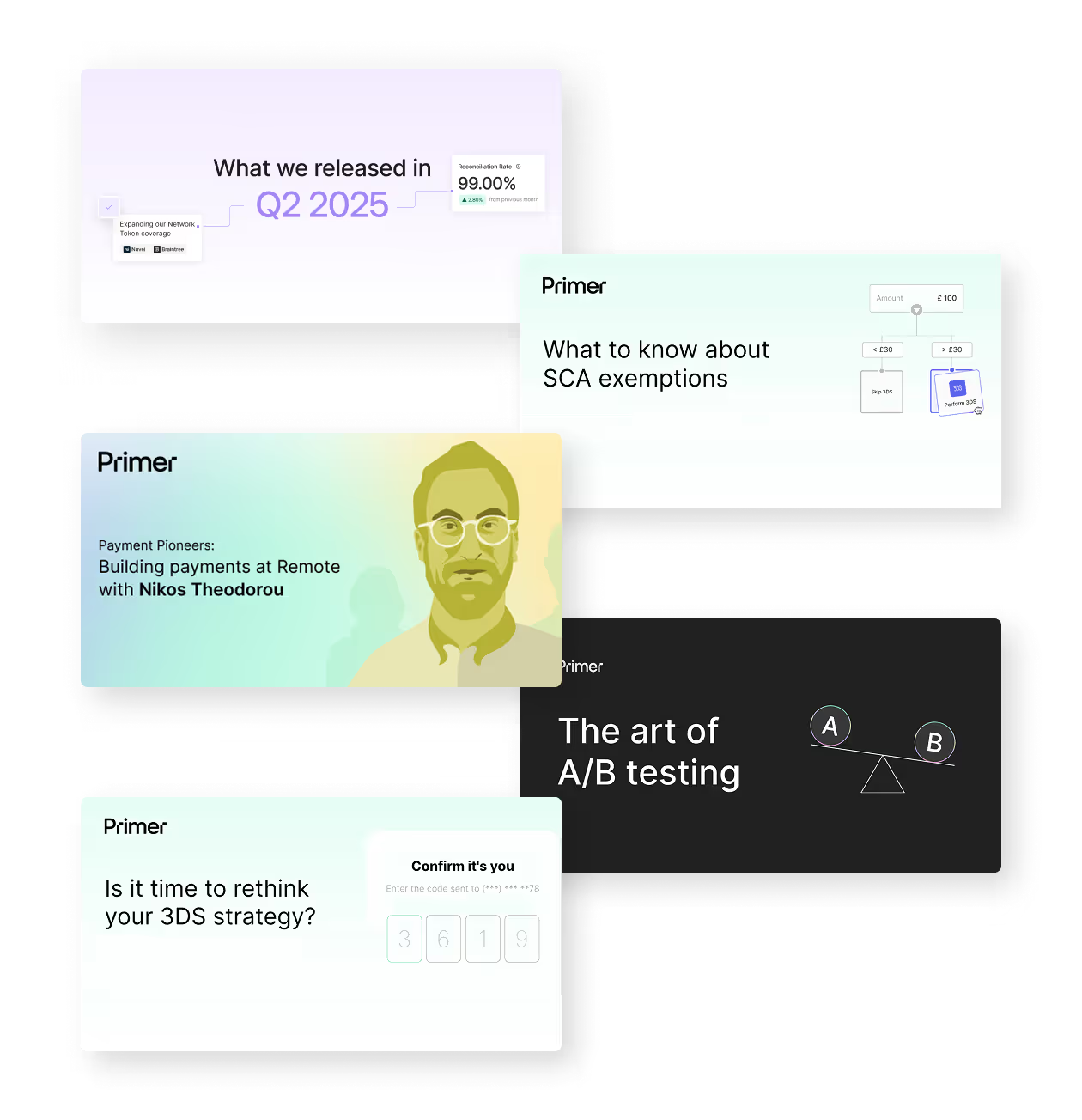



(1).png)
.png)